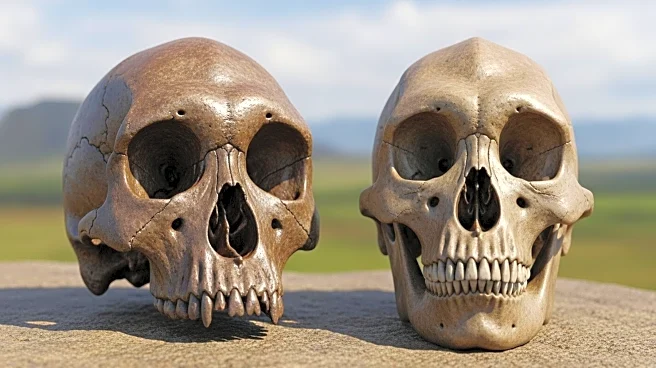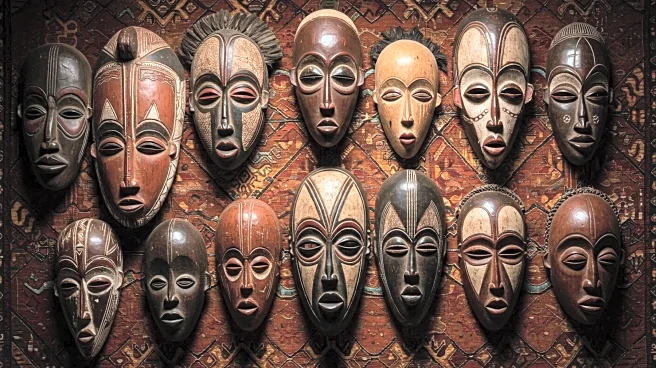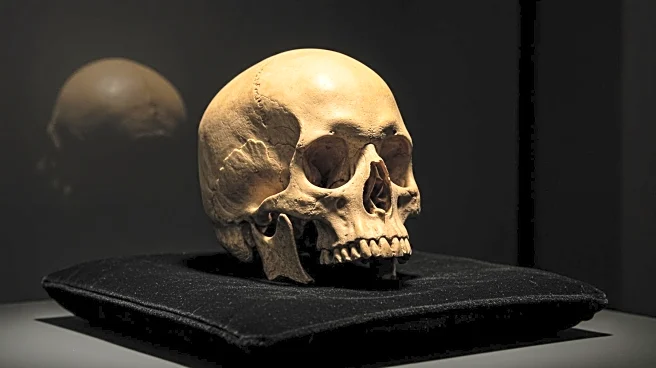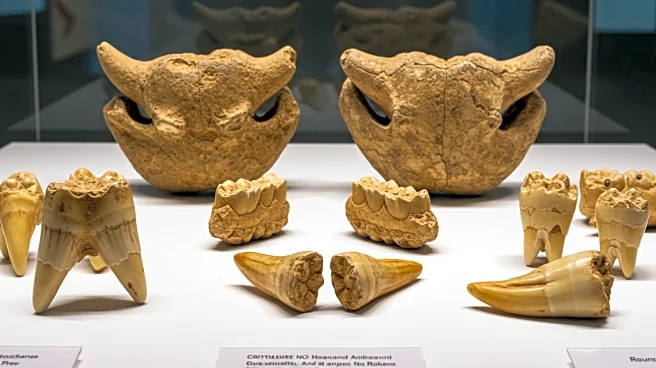Rapid Read • 7 min read
A study published in the Journal of Human Evolution reveals the discovery of 21 fossilized teeth in the Hualongdong cave in southeastern China, dating back 300,000 years. These teeth exhibit a blend of archaic and modern human features, suggesting either an unknown human lineage or ancient interbreeding. The teeth's hybrid anatomy includes small third molars typical of modern humans and thick roots similar to Homo erectus. This discovery challenges existing evolutionary models and suggests that the Hualongdong hominins may represent a distinct species or a result of interbreeding between early modern humans and Homo erectus.
AD
The findings from Hualongdong highlight Asia's significant role in human evolution, suggesting a complex evolutionary history with multiple human lineages coexisting and interbreeding. This challenges the traditional narrative focused on Africa and Europe, indicating that Asia was a hotspot for evolutionary diversity. Understanding these hybrid traits can provide insights into human adaptation and migration patterns, potentially reshaping our understanding of human ancestry and evolution. The study underscores the need for further research and genomic evidence to confirm these hypotheses.
The discovery raises questions about the ethical implications of categorizing human evolution and the potential biases in existing models. It also highlights the importance of interdisciplinary research in paleoanthropology, combining fossil analysis with genetic studies to uncover the complexities of human ancestry. The findings may prompt a reevaluation of how evolutionary history is taught and understood, emphasizing the interconnectedness of global human development.
AD
More Stories You Might Enjoy











